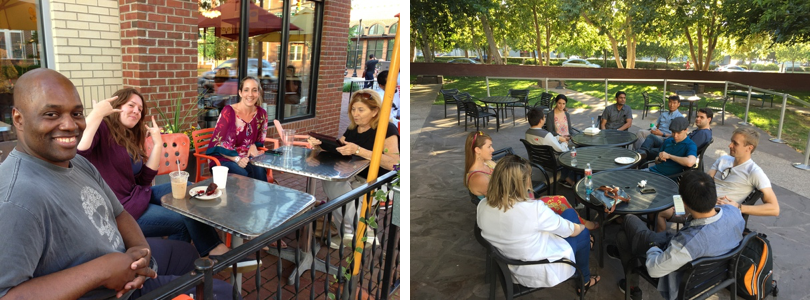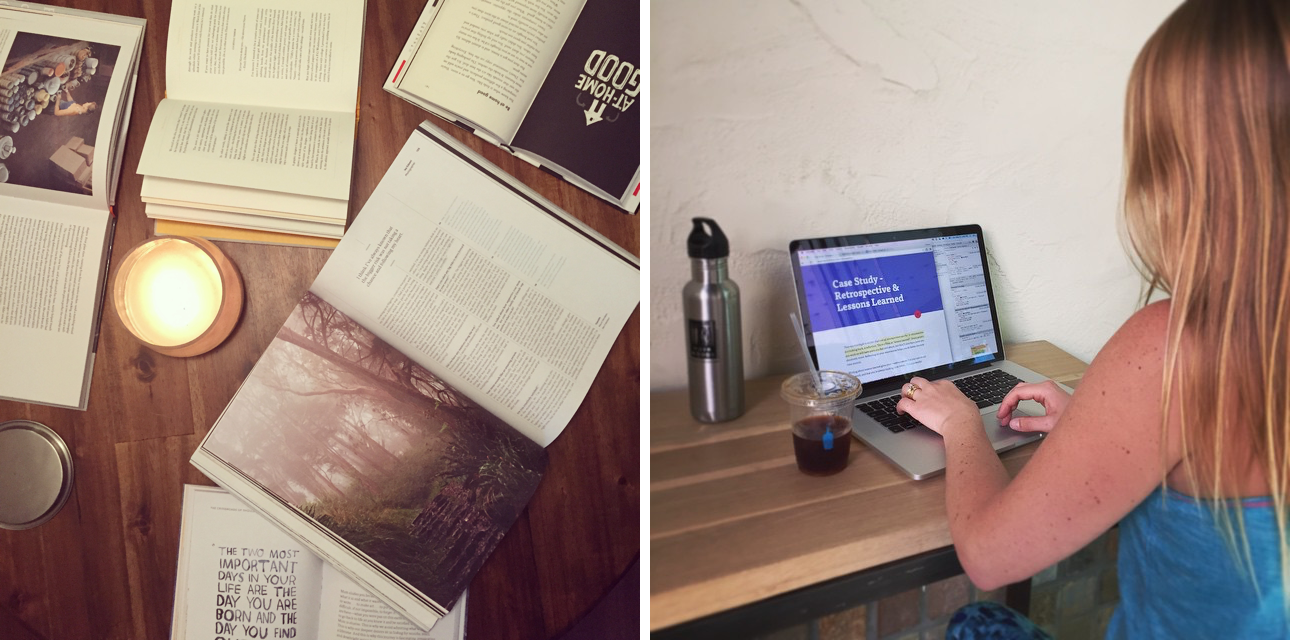Crafting Your UX Portfolio
Brittany and I are launching a guide to help interaction designers put their best foot forward on their portfolios. It’s not complete, but we’ve heard it’s useful. Here’s the story:
Designers shifting into software haven’t had clear guidelines to help them present their work in ways that truly excite those who are hiring designers for interaction work. Brittany (talented designer + my life partner), and myself have experienced this fog many times over.
Every single time we’ve prepared for new work, we’ve inevitably struggled internally with that thing that all designers face:
“::deep sigh:: … I have to update my portfolio. Again.”
Meetup origins
It seems like forever that we hosted our first design meetup. We called it Design Alexandria, mostly because we lived in a city called Alexandria (near Washington, DC) and we wanted to connect with other local designers. Such originality, no?
We’d been to other design meetups across the country — in San Francisco, NYC, Chicago — and plenty local haunts in DC (shout out to RefreshDC!), but none of them felt like the sort of meetup we wanted.
We were looking for a place to get to know other designers. To learn about you, as an individual, about your story, about what excites you, what you’re learning, what your dreams are. Most meetups were 50+ people, parties, with guest speakers, happy hours, and too much “networking”. Sure, learning happened, friends were made, and these things are good. But a tiny voice in the back of our minds was telling us we wanted something else.
Building friendships
We met at a local restaurant, inspired by another group dubbed “UX Dinner”, where the focus was smaller groups in more intimate settings, focused on (here’s the kicker) getting to know each other!

Turns out designers come from all walks of life; people have all sorts of amazing experiences, and every person has a beautiful story to share. We heard lots of problems, too.
Technology moves fast, so there were lots of questions around learning. There were questions about design processes, client management, technical tools, running a business, being a good teammate, fostering teams, productivity, coffee, color theory, typography trends, money, and everything else you could imagine designers talk about.
We found that the most common questions centered around portfolios:
- “Do I need a portfolio to get hired, or to show prospective clients?”
- “What do I need in a portfolio?”
- “Do I just put a bunch of pretty screenshots in it? Or do I need to write about my projects?”
- “Do I have to design it myself?”
- “Do I change it from company to company?”
These questions weren’t just questions we found in our meetup; they were questions we found in all of our local design community hangouts. Both Brittany and I would partake of other meetups, we’d teach workshops, and we’d hang out at conferences like UX Barcamp and An Event Apart DC.
We heard the same questions, over and over again.
We learned that designers coming out of these new “design immersion” courses — from d.school to General Assembly — were all wondering the same thing. These were questions that designers were asking everywhere online. Where were the helpful guides, the step-by-step portfolio resources, to help these souls?
We stumbled across bits and pieces here and there. We collected the good blog posts: there were personal articles, Smashing Magazine articles, and threads on message boards. Eventually, communities like Designer News cropped up, and “daily bests” like Sidebar made sharing design news much easier. Medium became an amazing repository of usefulness. Slack channels for design sprung to life.
Still, we couldn’t find yet a single unified guide to help designers put together a portfolio. Just more volume of both signal + noise.
We wanted a guide geared towards designers solving problems at companies that are increasingly tech-focused. These were the companies thinking about user experience from a system’s perspective, where design thinking was beginning to infiltrate all levels of business, starting with Lean Startup concepts of build -> measure -> learn, experimentation / exploration, and customer development (user research, anyone?) These were the companies looking for UX/UI designers, interaction designers, product designers, unicorn(?!) designers.
These are the companies hiring right now. They’re also the companies that most designers we talked to were hoping to find jobs with. But no one was answering questions specific to getting a job at these companies!
Start with sharing knowledge
We started with a few blog posts answering the most burning questions we heard from actual designers at our local meetups. These posts started as emails, sent to individuals. We thought they would help others, so we shared them as blog posts, and we received positive feedback. Much, much more positive feedback than we expected.
We started writing more, and at the same time talking to more designers who were trying to put together their design portfolios in a world ever-focused on tech, user experience, and solid design thinking.
Some of the designers we met were graphic designers from more traditional design backgrounds; others were developers learning about the impact of design + psychology on things they built (hello, kindred spirits); some were marketing folks, wanting to directly influence the things they were making; some were students, just wanting to make the world a better place.

As we wrote, we shared our work with these individuals. We gave freely of our time to help them craft their presentations. Each ended up with more confidence, with better chances at achieving their career goals, and each have taken action, making solid progress to a career in design that they’re proud of.
Our collection of blog posts, tips, maxims, and resources was feeling like something that could really help a lot of aspiring designers! Still… we have so much more we know we can contribute, more we want to write and show and guide. We’re working on it.
But it feels wrong to keep it to ourselves as we think, write, test first-hand, and learn what works. We’re tired of keeping it private, where we hand it out to a select few that we happen to meet in-person or through friends.
We’re ready to share it with all of you. We acknowledge that it’s not perfect (and never will be.) But we’re going to make it better. We’re going to hear from many more designers and help so many more. And we’re absolutely thrilled to do this, and ecstatic that you want to be a part of it.
Without further ado, check out our design portfolio guide here: Crafting Your UX Portfolio: A Weekend Guide